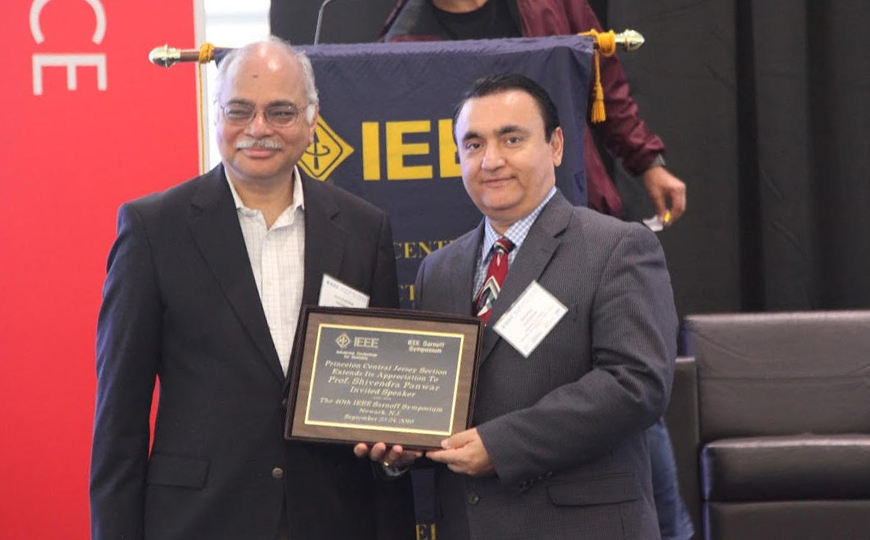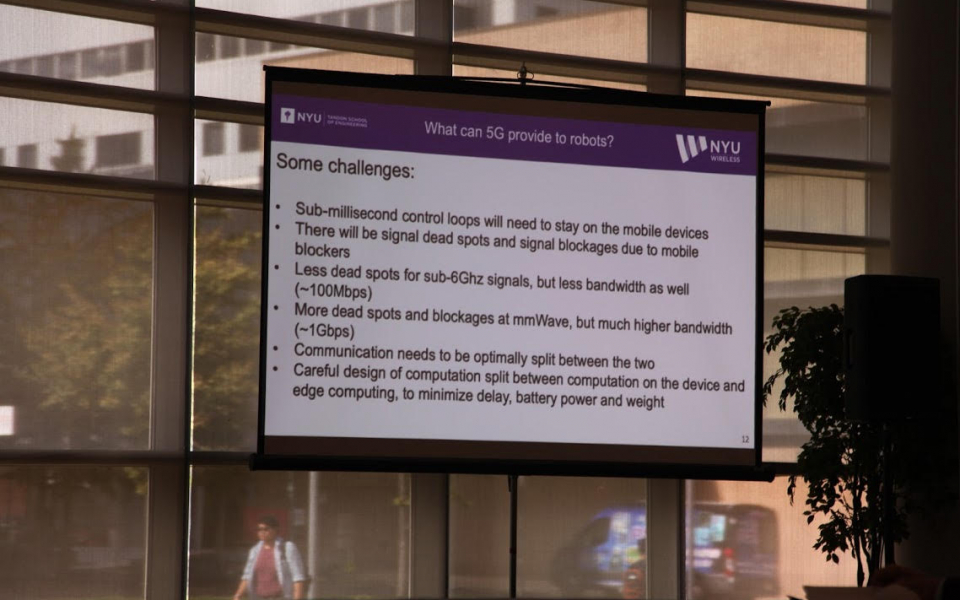Shivendra Panwar, the director of CATT, gave a keynote presentation at the 40th IEEE Sarnoff Symposium 2019 on September 24, 2019. His presentation, “5G: Millimeter waves, millisecond delays?” provided an overview of 5G’s unique promise of ultra-reliable low latency communications while outlining some of the challenges 5G brings to the mobile landscape.
These challenges include:
- sub-millisecond control loops will need to stay on mobile devices
- signal dead spots and signal blockages due to mobile blockers
- less dead spots for sub-6GHz signals, but less bandwidth as well (~100Mbps)
Prof. Panwar’s presentation was based off of his 2018 paper of the same name. Millimeter Waves, Millisecond Delays is available on the ACM Digital Library.
Abstract from Millimeter Waves, Millisecond Delays
Two simultaneous revolutionary changes are occurring in networking: the advent of mmWave networks and the advent of applications that require end-to-end delays of the order of a few milliseconds. mmWave is the first physical layer technology that promises huge wireless bandwidth, but with very poor reliability as a result of its vulnerability to blockage (optical fiber offers high reliability and high bandwidth; sub-6Ghz microwave networks offer lower bandwidth but graceful bandwidth degradation that can be mitigated). The emergence of the need for ultra-low delays for haptic communications and control loops in self-driving cars and other sensor-based applications, has radically changed the requirements for layers above the physical layer. These two changes transform standard networking problems and will lead to a new wave of research. Examples will be used to illustrate this paradigm shift.


